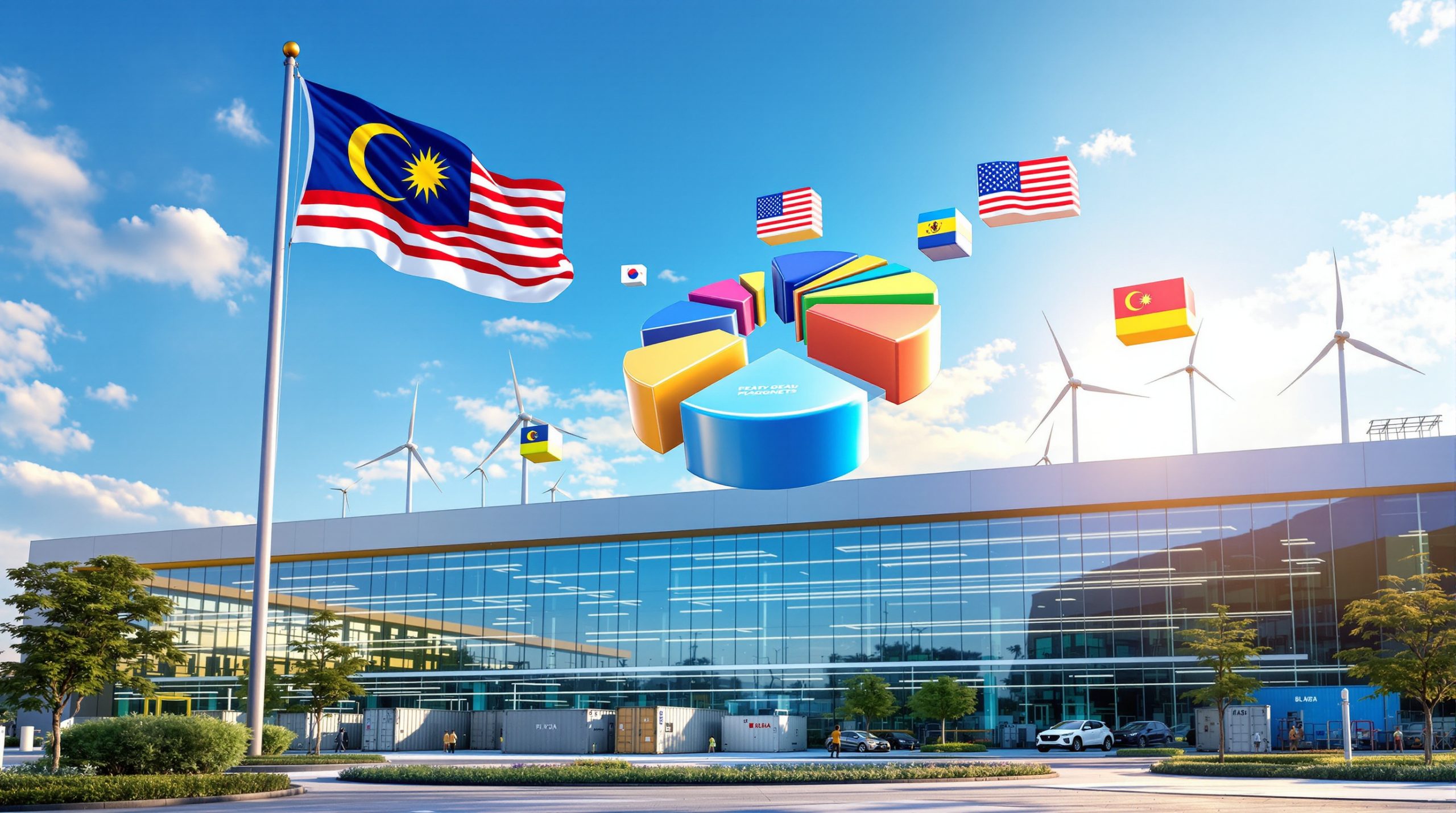Understanding China's Global Iron Ore Market Position
China's position as the world's dominant steel producer has fundamentally reshaped global iron ore markets, creating unprecedented supply chain dependencies that ripple across continents. The China and iron ore supply chain represents one of the most critical commodity relationships in the modern global economy. The nation's massive industrial infrastructure demands have transformed it into the primary driver of international iron ore trade, with implications extending far beyond simple commodity transactions.
The establishment of China Mineral Resources Group (CMRG) in 2022 marked a strategic shift toward centralised purchasing power, designed to strengthen Beijing's negotiating position with major suppliers including BHP Group, Rio Tinto Group, and Vale. This consolidation represents more than administrative restructuring – it signals China's recognition that raw material security directly impacts national economic stability.
Market dynamics reveal the scale of this dependency through monthly import patterns that consistently exceed 90 million tons, with seasonal fluctuations creating significant price volatility in global markets. Furthermore, iron ore price trends continue to reflect the complex interplay between Chinese steel production capacity and international market conditions.
Steel production capacity continues expanding across China's industrial heartlands, driving sustained demand for high-quality iron ore despite domestic production initiatives. Economic factors influencing these import patterns include infrastructure investment cycles, construction demand fluctuations, and manufacturing export requirements.
The interconnection between China's steel production and global economic conditions means that shifts in Chinese demand immediately impact pricing structures from Australia's Pilbara region to Brazil's Minas Gerais state. In addition, demand insights for iron ore miners reveal how these patterns influence global investment strategies.
Geopolitical Forces Reshaping Trade Relationships
The ongoing dispute between CMRG and BHP Group over currency-denominated transactions illustrates how geopolitical tensions are fundamentally altering traditional commodity trading relationships. CMRG's restrictions on dollar-denominated cargoes from BHP represent a direct challenge to established international trade practices, potentially setting precedents for other commodity transactions globally.
This standoff extends beyond simple payment preferences, encompassing broader questions about currency dominance in international commodity markets. The dispute risks disrupting shipments from the world's largest iron ore producer to its most important market, creating supply chain uncertainties that reverberate throughout the global steel industry.
Vale's chief financial officer Marcelo Bacci emphasised the mutual dependency aspect, noting that supply chain disruptions would negatively impact all parties involved. "The relationship between Chinese buyers and global suppliers is characterised by mutual dependence", he stated, highlighting the delicate balance between political objectives and economic realities in commodity trading relationships.
CMRG's criticism of current pricing mechanisms adds another dimension to these tensions. The organisation has characterised existing market mechanisms as fundamentally flawed, claiming they create value imbalances between mining companies and steel producers. Their research arm has specifically targeted what they consider unfair pricing structures that artificially inflate costs for Chinese steel manufacturers.
The implications extend beyond bilateral trade relationships to challenge the broader framework of international commodity transactions. However, tariff impacts on iron ore demonstrate how trade policy decisions create additional complexity in these relationships. Other major mining companies are closely monitoring developments, recognising that outcomes could influence their own negotiating positions with Chinese buyers.
Strategic currency considerations reflect China's broader objectives to reduce reliance on dollar-denominated international transactions. The iron ore sector serves as a testing ground for alternative payment mechanisms that could eventually expand to other commodity categories.
Supply Chain Diversification Strategies
China's approach to iron ore supply security increasingly emphasises geographic diversification, reducing historical dependencies on single-source suppliers. This strategic shift acknowledges vulnerabilities exposed during recent trade tensions and supply disruptions.
Australian suppliers, traditionally dominant in Chinese markets, face growing competition from Brazilian, African, and other regional producers as Chinese importers actively seek alternative sources. This diversification extends beyond simple risk mitigation to encompass quality considerations, processing requirements, and logistical efficiency factors.
Quality challenges from alternative suppliers present technical obstacles for Chinese steel producers. Lower-grade ores require additional processing steps, increasing energy consumption and production costs. Steel manufacturers must adapt their furnace operations and beneficiation processes to accommodate varying ore specifications from different geographic sources.
Processing cost implications vary significantly based on ore grade, mineral composition, and impurity levels. Brazilian suppliers typically offer higher-grade products but face logistical constraints that can impact delivery schedules. African suppliers provide opportunities for geographic diversification but often require infrastructure investments to support reliable transportation networks.
Technology adaptations become necessary as Chinese steel producers integrate diverse ore qualities into their production processes. Advanced blending techniques, specialised furnace configurations, and enhanced quality control systems enable efficient utilisation of varied raw material inputs.
Transportation considerations play crucial roles in diversification strategies. For instance, onslow haulage operations demonstrate how operational reliability affects supply chain security. Alternative supply routes require different shipping patterns, port facilities, and inland distribution networks.
Domestic Production Enhancement Initiatives
China's domestic iron ore production expansion represents a fundamental component of supply security strategies, aimed at reducing import dependencies while supporting domestic mining sector development. These initiatives encompass both capacity increases at existing operations and development of previously unexploited mineral resources.
Investment in domestic extraction capabilities focuses on technological improvements that enhance ore recovery rates and processing efficiency. Advanced mining techniques, including automated extraction systems and improved beneficiation processes, enable economic exploitation of lower-grade domestic deposits previously considered unviable.
Geographic distribution of domestic production spans multiple provinces, with significant developments in traditional mining regions and exploration of previously untapped areas. This geographic spread provides operational flexibility and reduces vulnerability to regional disruptions.
Steel scrap utilisation serves as a complementary strategy to reduce primary iron ore requirements. Electric arc furnace technology expansion enables increased recycled steel usage, effectively reducing demand for raw iron ore inputs. This circular economy approach aligns with environmental objectives while supporting supply security goals.
Infrastructure investments supporting domestic extraction include transportation networks, processing facilities, and environmental management systems. These capital commitments demonstrate long-term commitment to domestic production enhancement despite potentially higher costs compared to imported alternatives.
Quality improvement programmes focus on upgrading domestic ore through advanced processing techniques. Concentration methods, magnetic separation systems, and flotation processes enable production of higher-grade concentrates that compete effectively with imported materials.
Market Concentration Risks and Price Dynamics
Global iron ore market concentration creates inherent vulnerabilities that influence pricing structures and supply reliability. The dominance of a relatively small number of major suppliers means that operational disruptions at key facilities can immediately impact global availability and pricing.
Price volatility factors include seasonal demand variations, transportation bottlenecks, and weather-related supply disruptions. Monsoon seasons in key producing regions, port congestion issues, and shipping route disruptions all contribute to market uncertainty that affects pricing mechanisms.
Supply disruption scenarios demonstrate the fragility of highly concentrated supply chains. Equipment failures at major mines, labour disputes, or environmental restrictions can remove millions of tons of annual capacity from global markets, creating immediate price pressures. Consequently, the China and iron ore supply chain relationship becomes increasingly vulnerable to such disruptions.
Transportation bottlenecks represent critical vulnerabilities in the supply chain. Port capacity limitations, railway congestion, and shipping availability all influence delivery schedules and costs. These logistical constraints become particularly pronounced during peak demand periods.
Seasonal demand patterns reflect construction activity cycles, manufacturing output variations, and inventory management practices across different regions. Understanding these patterns enables better forecasting of price movements and supply requirements.
Spot market mechanisms increasingly influence pricing structures, replacing traditional long-term contract arrangements. This shift toward shorter-term pricing creates more immediate response to supply and demand imbalances but also increases volatility for both buyers and suppliers.
Steel Production Technology Evolution
Technological developments in steel production are fundamentally altering iron ore demand patterns, with implications extending throughout the global supply chain. Hydrogen-based steel production represents a potentially transformative technology that could significantly reduce traditional iron ore requirements.
Electric arc furnace expansion enables increased utilisation of recycled steel inputs, reducing demand for primary iron ore materials. This technology shift supports circular economy principles while providing supply security benefits through reduced import dependencies.
Green steel initiatives encompass various technological approaches aimed at reducing carbon emissions while maintaining production efficiency. These developments include hydrogen reduction processes, carbon capture systems, and renewable energy integration in steel production facilities.
Technology adoption timelines vary based on economic feasibility, regulatory requirements, and infrastructure availability. Early implementation focuses on demonstration projects and pilot facilities, with commercial-scale deployment expected to accelerate through the remainder of this decade.
Investment requirements for technology transitions represent significant capital commitments for steel producers. Advanced furnace systems, hydrogen production facilities, and renewable energy integration all require substantial upfront investments that influence adoption timing and scale. Moreover, mining investment trends suggest similar patterns across global markets.
Market penetration of new technologies depends on cost competitiveness compared to traditional production methods. Government incentives, carbon pricing mechanisms, and environmental regulations all influence the economic attractiveness of alternative steel production approaches.
Transportation Infrastructure and Security
China's iron ore supply security depends heavily on transportation networks that connect international suppliers with domestic steel production centres. Port infrastructure capabilities, inland transportation systems, and storage facilities all influence supply chain reliability and costs.
Major receiving ports handle millions of tons of iron ore annually, requiring sophisticated handling equipment, storage facilities, and inland transportation connections. Port capacity constraints can create bottlenecks during peak import periods, influencing delivery schedules and inventory management strategies.
Railway and inland transportation networks distribute imported iron ore from coastal ports to steel production facilities across China's industrial regions. These transportation systems require substantial capacity and reliability to support consistent steel production schedules.
Storage facility developments enable strategic inventory management during supply disruptions or market volatility. Large-capacity storage systems provide buffer capacity that supports production continuity during temporary supply interruptions.
Shipping route vulnerabilities include maritime chokepoints, seasonal weather patterns, and geopolitical tensions that can disrupt international transportation. Alternative routing strategies provide contingency options during disruptions but often involve longer transit times and higher costs.
Maritime transportation efficiency influences total delivered costs and supply reliability. Vessel availability, shipping rates, and port congestion all impact the economics of international iron ore trade relationships.
Investment Opportunities in Changing Markets
Supply chain shifts create investment opportunities across multiple sectors, from mining operations to transportation infrastructure and technology development. Junior mining companies in Africa and South America attract Chinese investment as buyers seek to diversify supply sources.
Infrastructure development projects supporting new supply routes represent significant capital investment opportunities. Port facilities, railway systems, and processing plants all require substantial funding to support expanded trade relationships.
Technology companies enabling ore processing efficiency improvements benefit from increased demand for advanced beneficiation systems, automation technologies, and quality control equipment. These solutions become essential as producers work with diverse ore qualities from multiple sources.
Market timing considerations influence investment returns across the iron ore value chain. Cyclical demand patterns, price volatility, and geopolitical risk factors all impact investment timing and expected returns.
Geopolitical risk premiums affect mining company valuations, particularly for operations in politically sensitive regions or companies with concentrated customer bases. Diversified operations and supply relationships command valuation premiums in uncertain market conditions.
Long-term demand projections support investment decisions across the supply chain. Despite technology evolution and recycling improvements, global steel demand growth continues supporting iron ore requirements, particularly in developing markets with expanding infrastructure needs.
Strategic Evolution Through 2030
China's iron ore strategy will continue evolving through technological integration, policy framework development, and market structure adaptations. Artificial intelligence and automation technologies are increasingly deployed in domestic mining operations to improve efficiency and reduce costs.
Advanced processing techniques for lower-grade ores enable economic utilisation of previously marginal resources. These technological capabilities support domestic production expansion while reducing quality-related constraints in supply diversification strategies.
Digital supply chain management systems provide enhanced visibility and control over complex international trading relationships. These technologies enable better inventory optimisation, delivery scheduling, and risk management across multiple suppliers and transportation routes.
Policy framework development encompasses government support for domestic production, environmental regulations affecting mining practices, and trade relationship management with key supplier nations. These policy initiatives influence market structure evolution and investment priorities.
Market structure predictions indicate continued diversification trends, with reduced concentration among supplier countries and increased importance of alternative sources. Pricing mechanisms may evolve beyond current spot market systems toward more sophisticated risk management approaches.
Environmental considerations increasingly influence sourcing decisions, with sustainability metrics becoming important factors in supplier evaluation processes. Green mining practices, carbon footprint assessments, and environmental compliance records affect supplier selection and relationship management.
Technology integration roadmaps extend beyond current capabilities to encompass emerging technologies that could further transform iron ore requirements and steel production processes. These developments influence long-term strategic planning and investment priorities.
The China and iron ore supply chain relationship will continue adapting to technological advancements, geopolitical shifts, and environmental requirements. Furthermore, understanding these evolving dynamics remains crucial for stakeholders across the global steel industry.
Disclaimer: This analysis is based on publicly available information and market observations as of October 2025. Market conditions, political relationships, and technological developments may change rapidly, affecting the accuracy of forward-looking statements and predictions contained in this content.
Looking to Capitalise on Iron Ore Market Shifts?
Discovery Alert's proprietary Discovery IQ model delivers real-time alerts on significant iron ore and mining discoveries across the ASX, empowering subscribers to identify actionable opportunities ahead of the broader market. Explore why major mineral discoveries have historically generated substantial returns for early investors, then begin your 30-day free trial today to position yourself ahead of evolving market dynamics.




